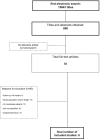Horizontal augmentation techniques in the mandible: a systematic review
- PMID: 35532820
- PMCID: PMC9086020
- DOI: 10.1186/s40729-022-00421-7
Horizontal augmentation techniques in the mandible: a systematic review
Abstract
Purpose: Placement of dental implants has evolved to be an advantageous treatment option for rehabilitation of the fully or partially edentulous mandible. In case of extensive horizontal bone resorption, the bone volume needs to be augmented prior to or during implant placement in order to obtain dental rehabilitation and maximize implant survival and success.
Methods: Our aim was to systematically review the available data on lateral augmentation techniques in the horizontally compromised mandible considering all grafting protocols using xenogeneic, synthetic, or allogeneic material. A computerized and manual literature search was performed for clinical studies (published January 1995 to March 2021).
Results: Eight studies ultimately met the inclusion criteria comprising a total of 276 procedures of xenogeneic, allogeneic, or autogenous bone graft applications in horizontal ridge defects. Particulate materials as well as bone blocks were used as grafts with a mean follow-up of 26.0 months across all included studies. Outcome measures, approaches and materials varied from study to study. A gain of horizontal bone width of the mandible with a mean of 4.8 mm was observed in seven of eight studies. All but one study, reported low bone graft failure rates of 4.4% in average.
Conclusions: Only limited data are available on the impact of different horizontal augmentation strategies in the mandible. The results show outcomes for xenogeneic as well as autologous bone materials for horizontal ridge augmentation of the lower jaw. The use of allogeneic bone-block grafts in combination with resorbable barrier membranes must be re-evaluated. Randomized controlled clinical trials are largely missing.
Keywords: Augmentation; Horizontal; Lateral; Lower jaw; Mandible.
© 2022. The Author(s).
Conflict of interest statement
Dr. Smeets reports grants and lecture fees from CAMLOG Biotechnologies AG, lecture fees from Straumann, Dentsply and Botiss, outside the submitted work. Dr. Jung reports grants from CAMLOG Biotechnologies AG, during the conduct of the study and receiving grants, lecture fees from the following industrial companies: Geistlich, Straumann, Vita, Dentsply, Henry Schein. Dr. Al-Nawas reports grants and personal fees from Geistlich, Straumann, and Dentsply, grants from Nobel Biocare, outside the submitted work.
Figures



References
Publication types
MeSH terms
LinkOut - more resources
Full Text Sources
Miscellaneous

